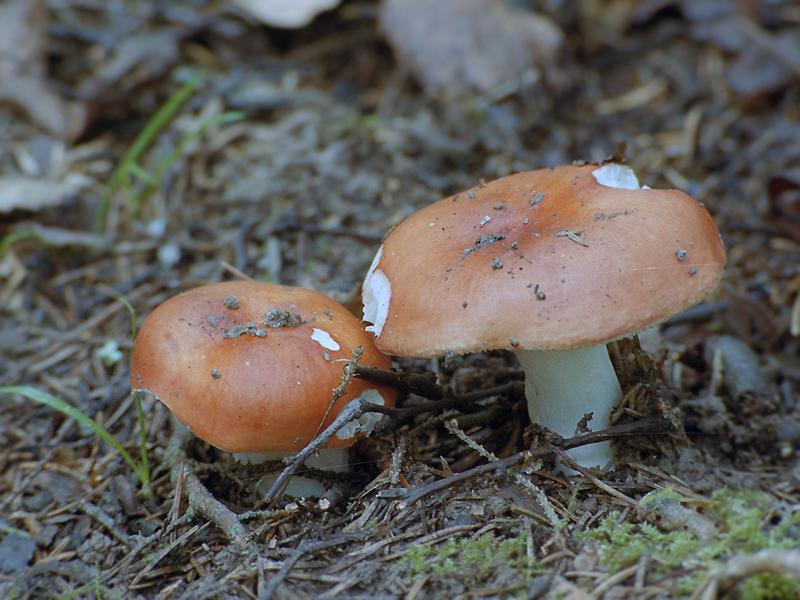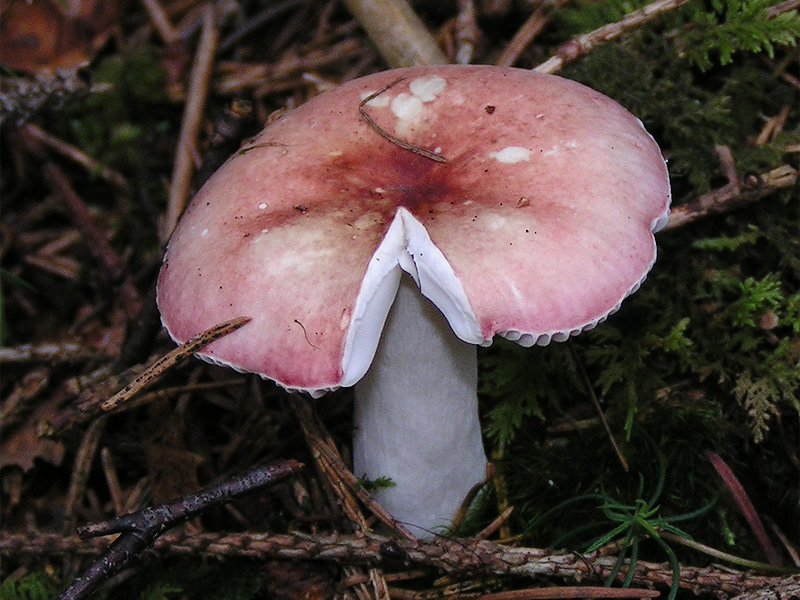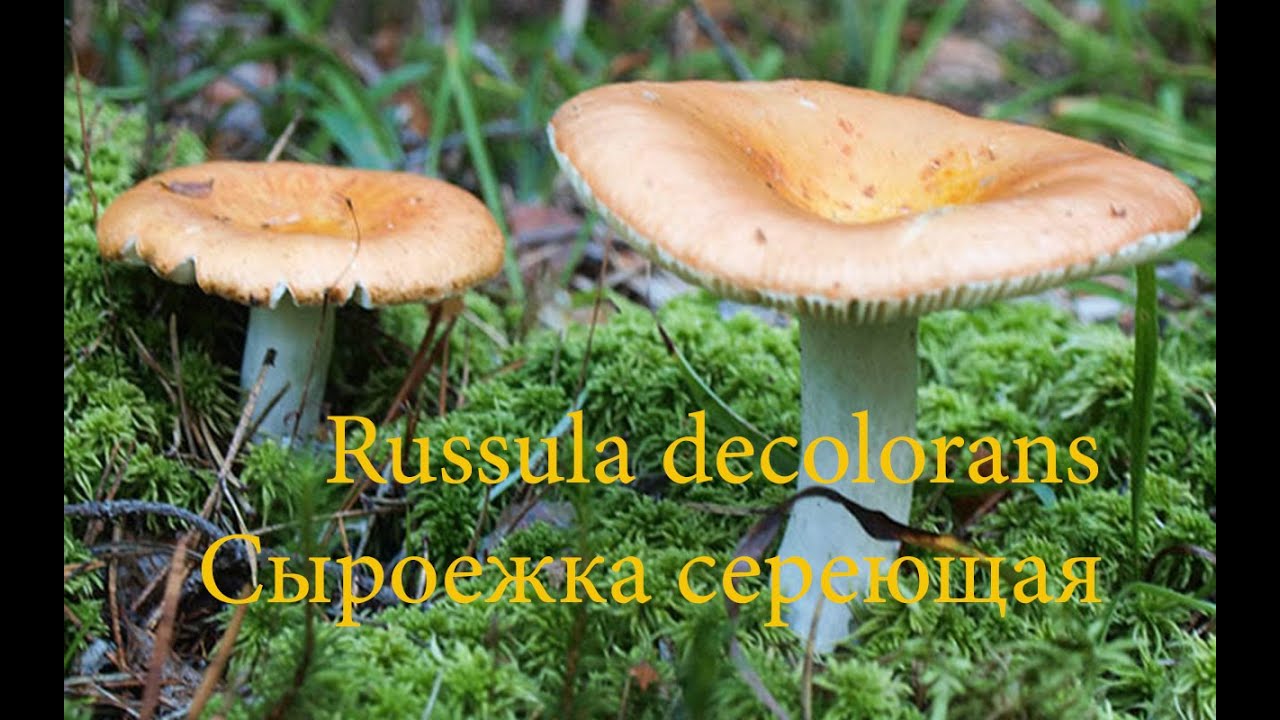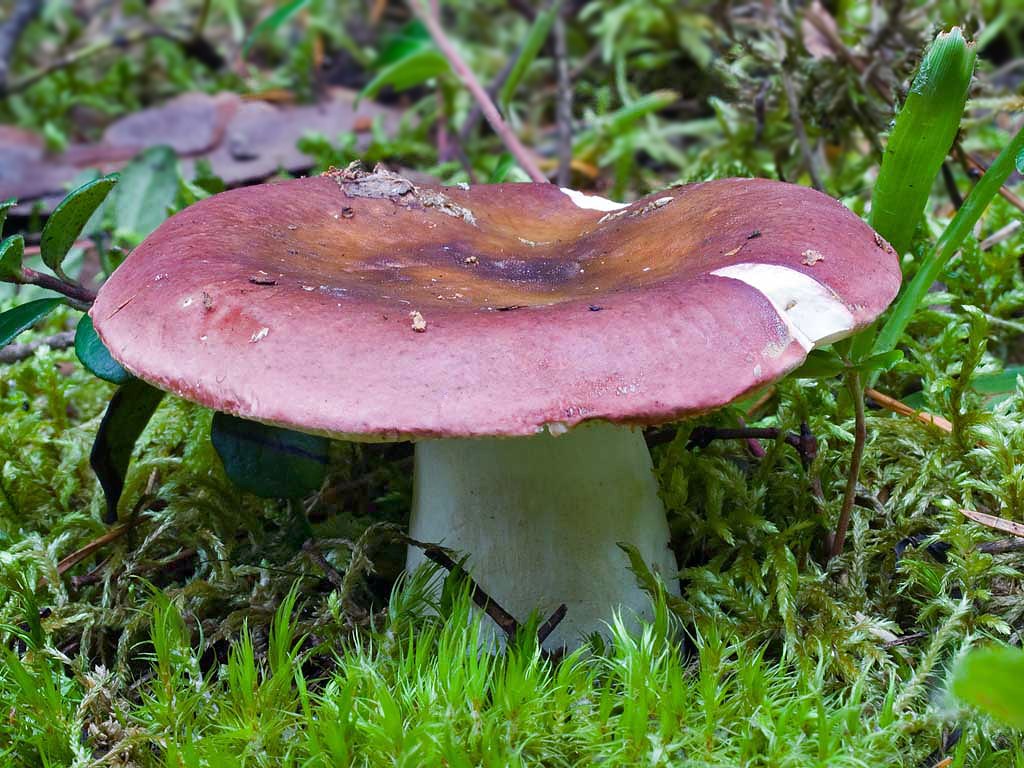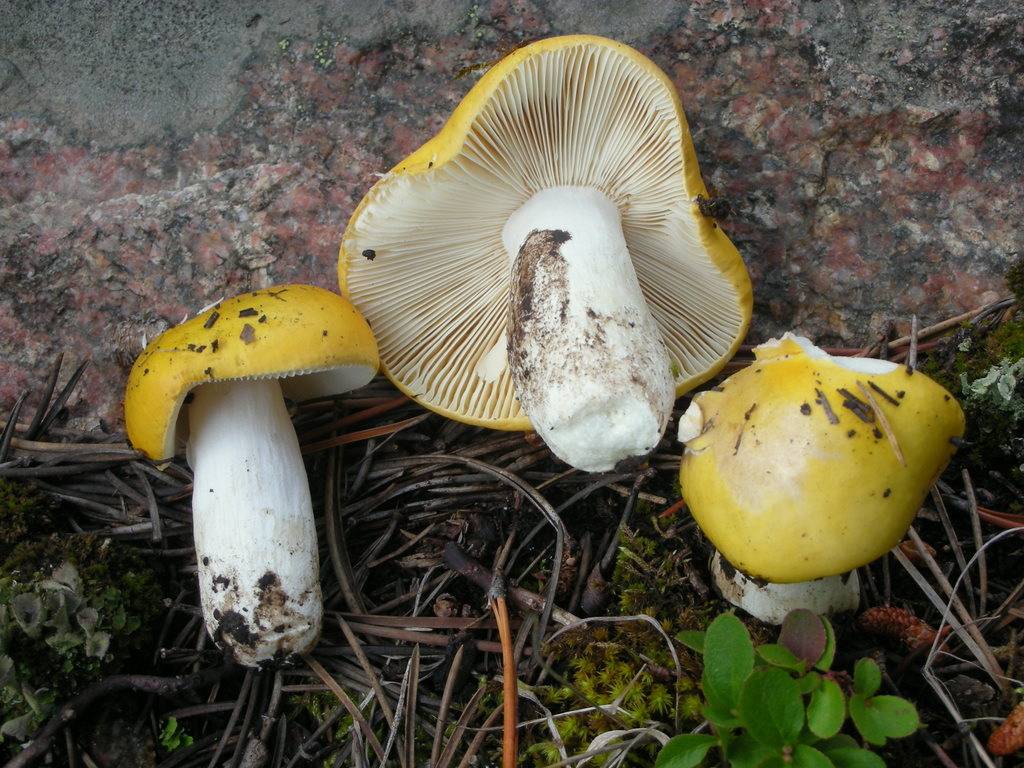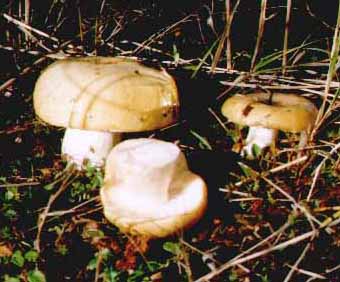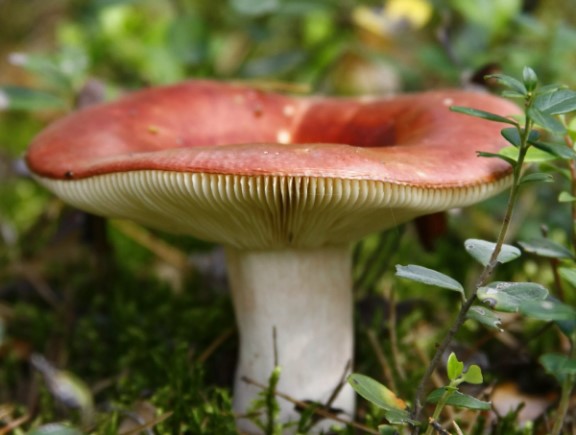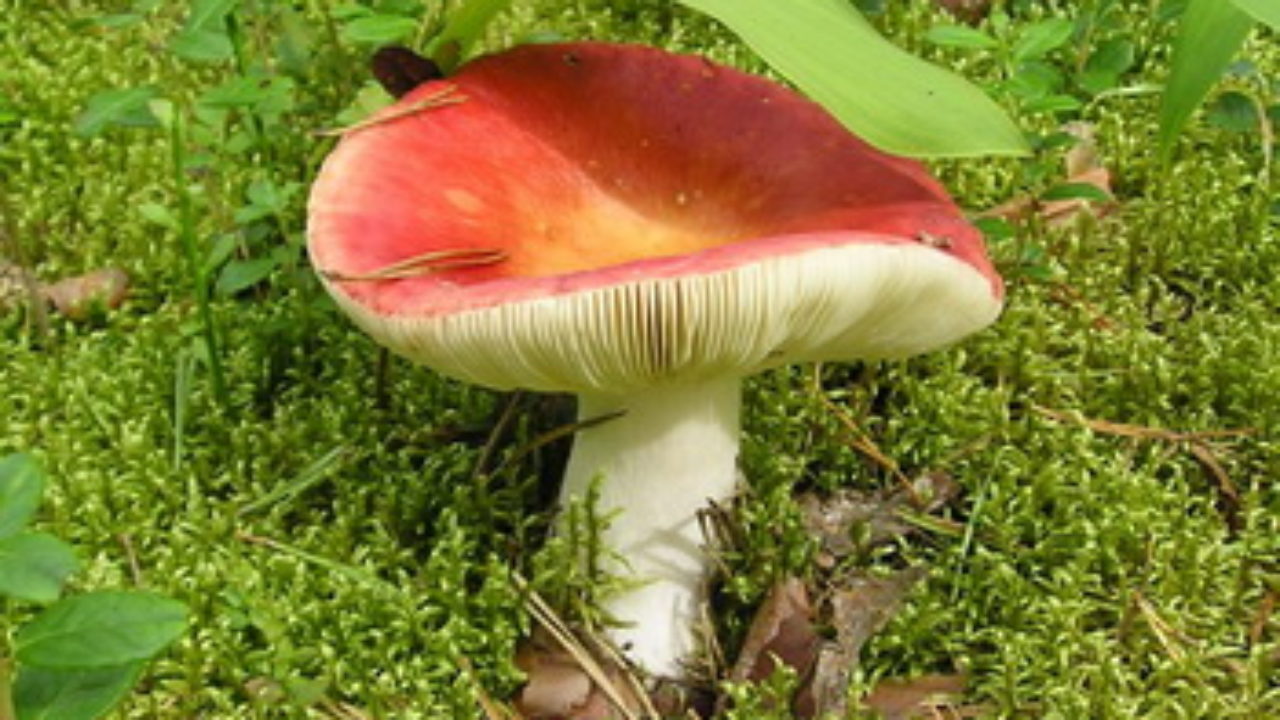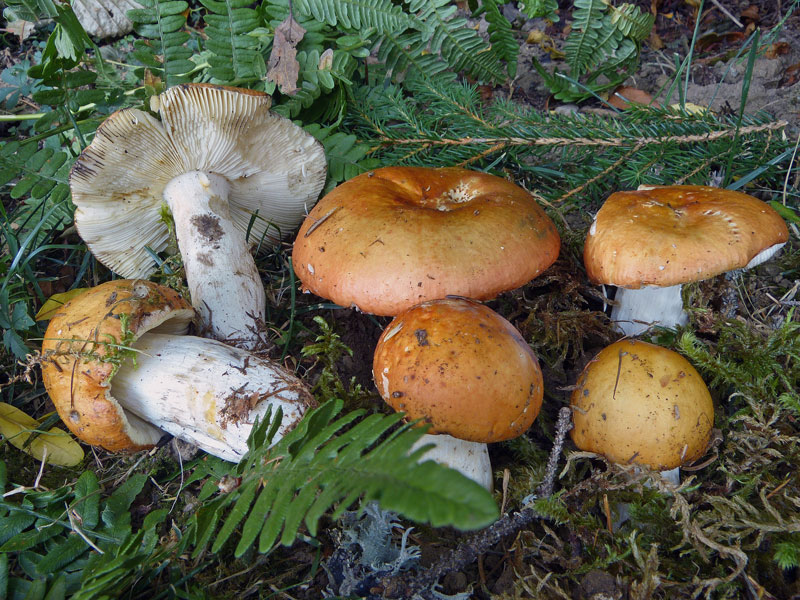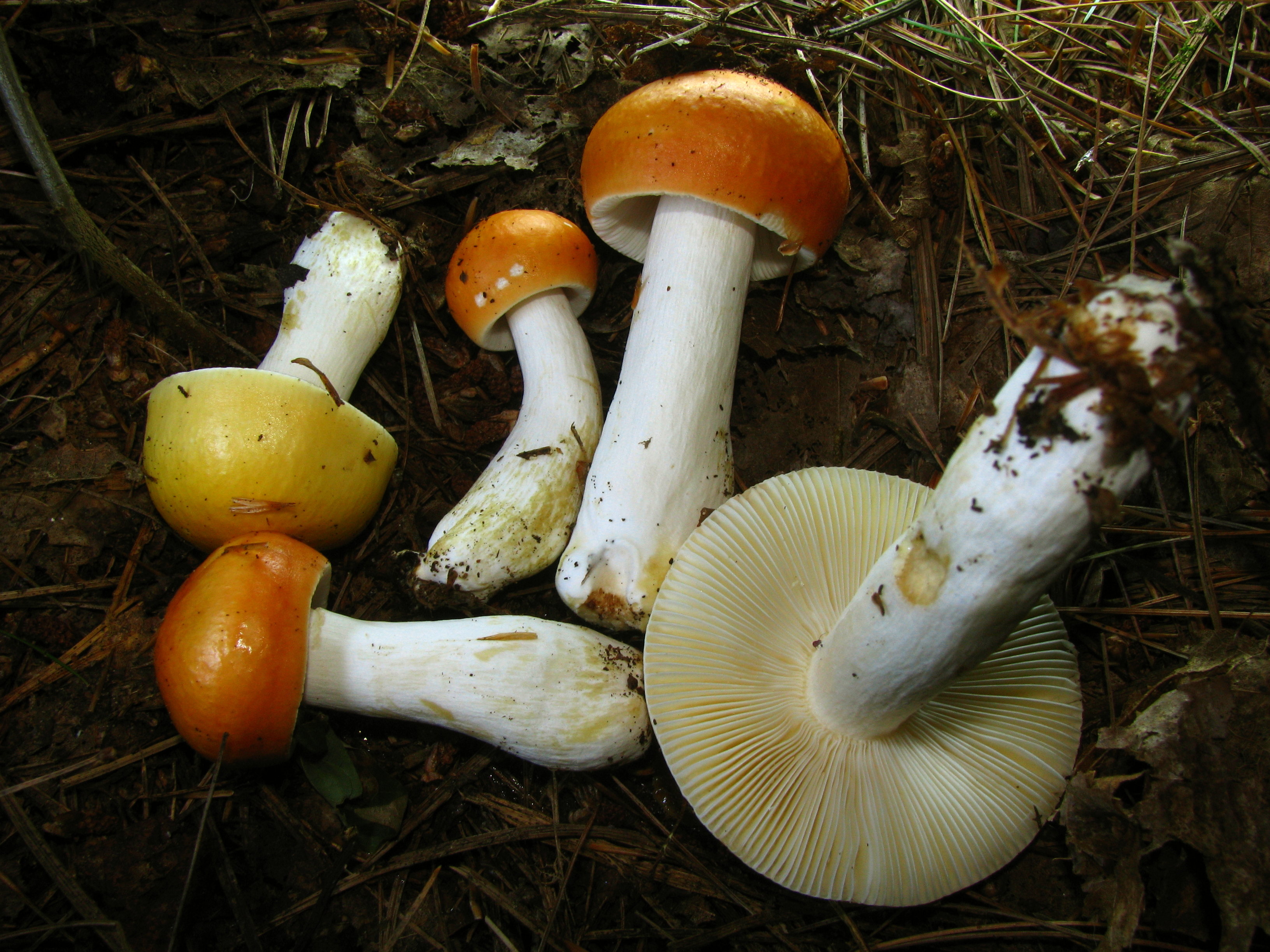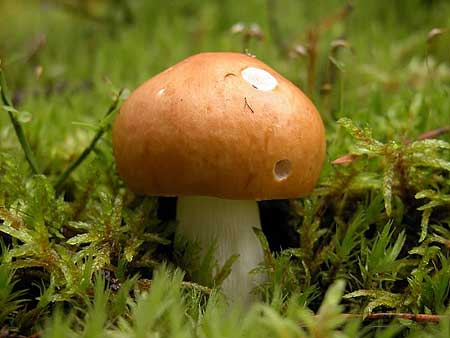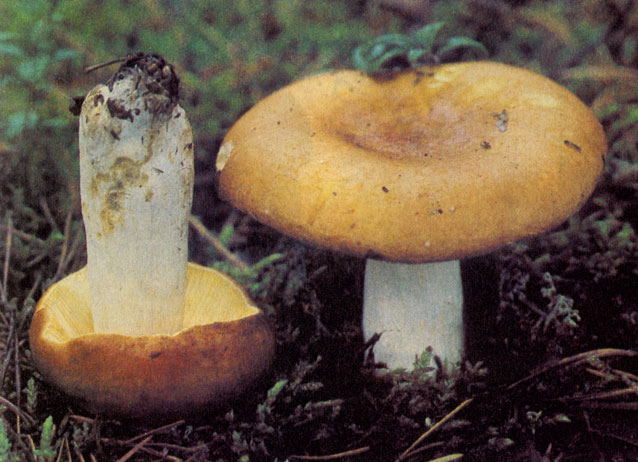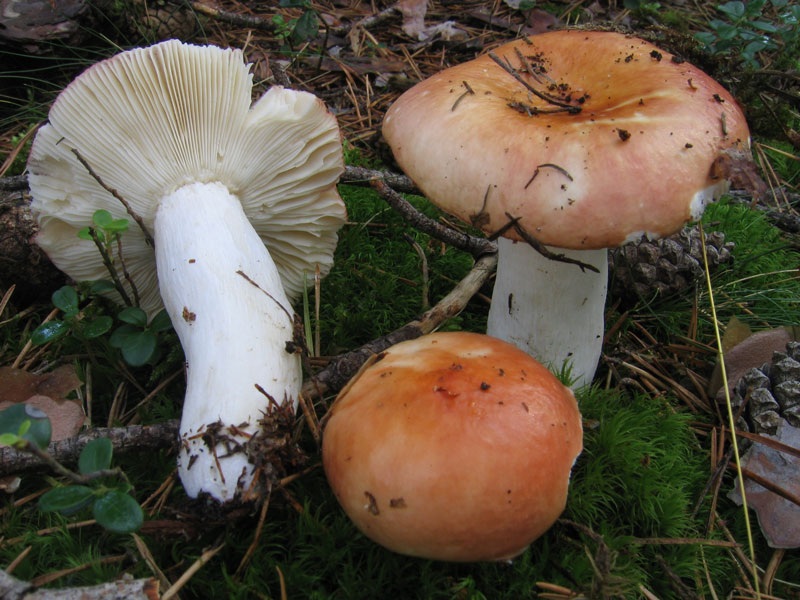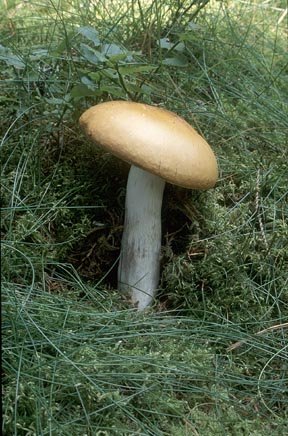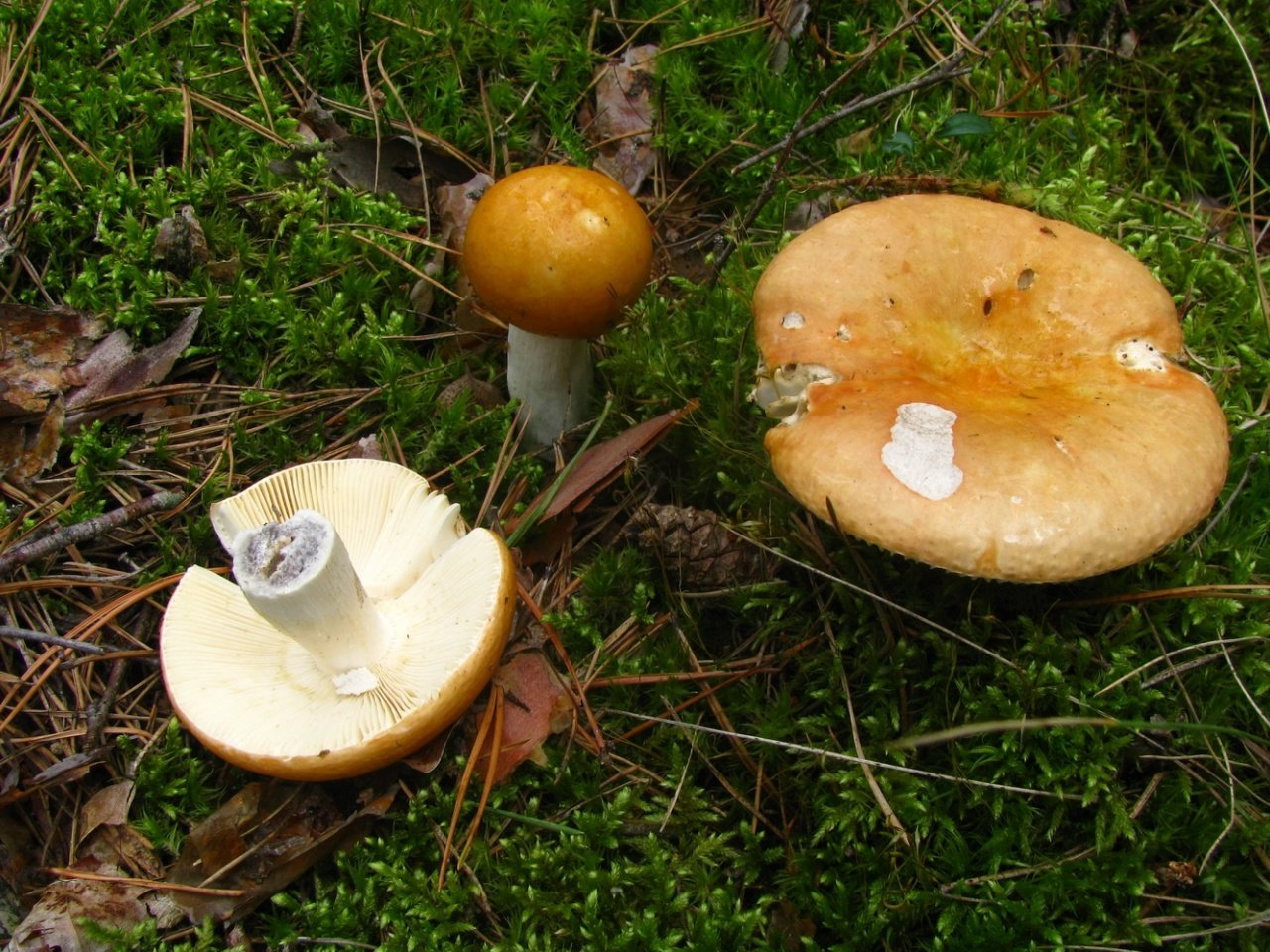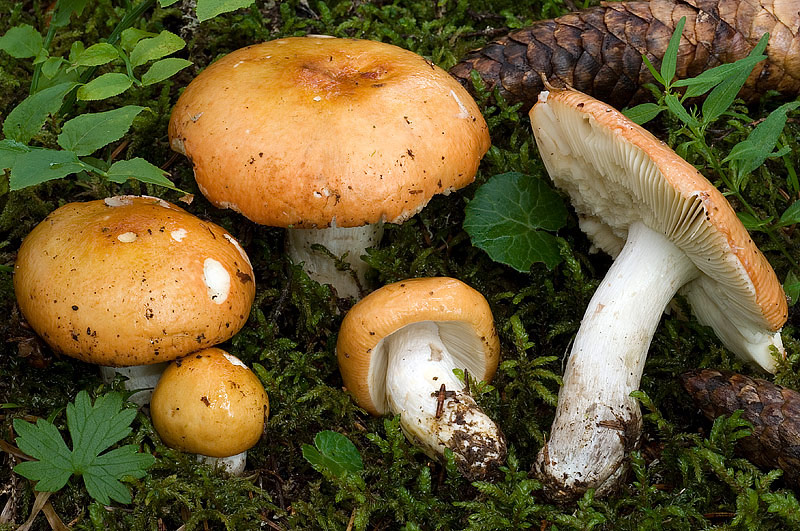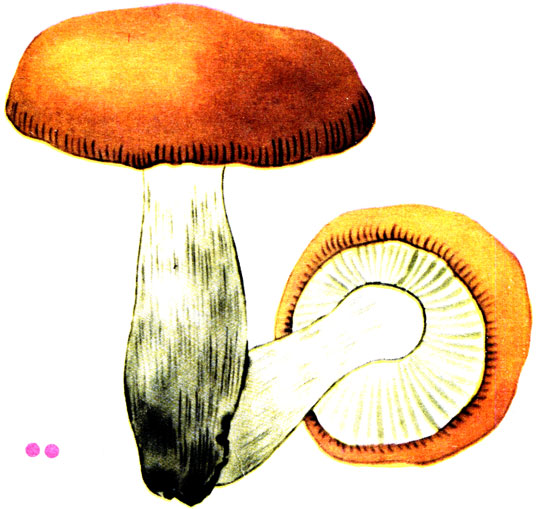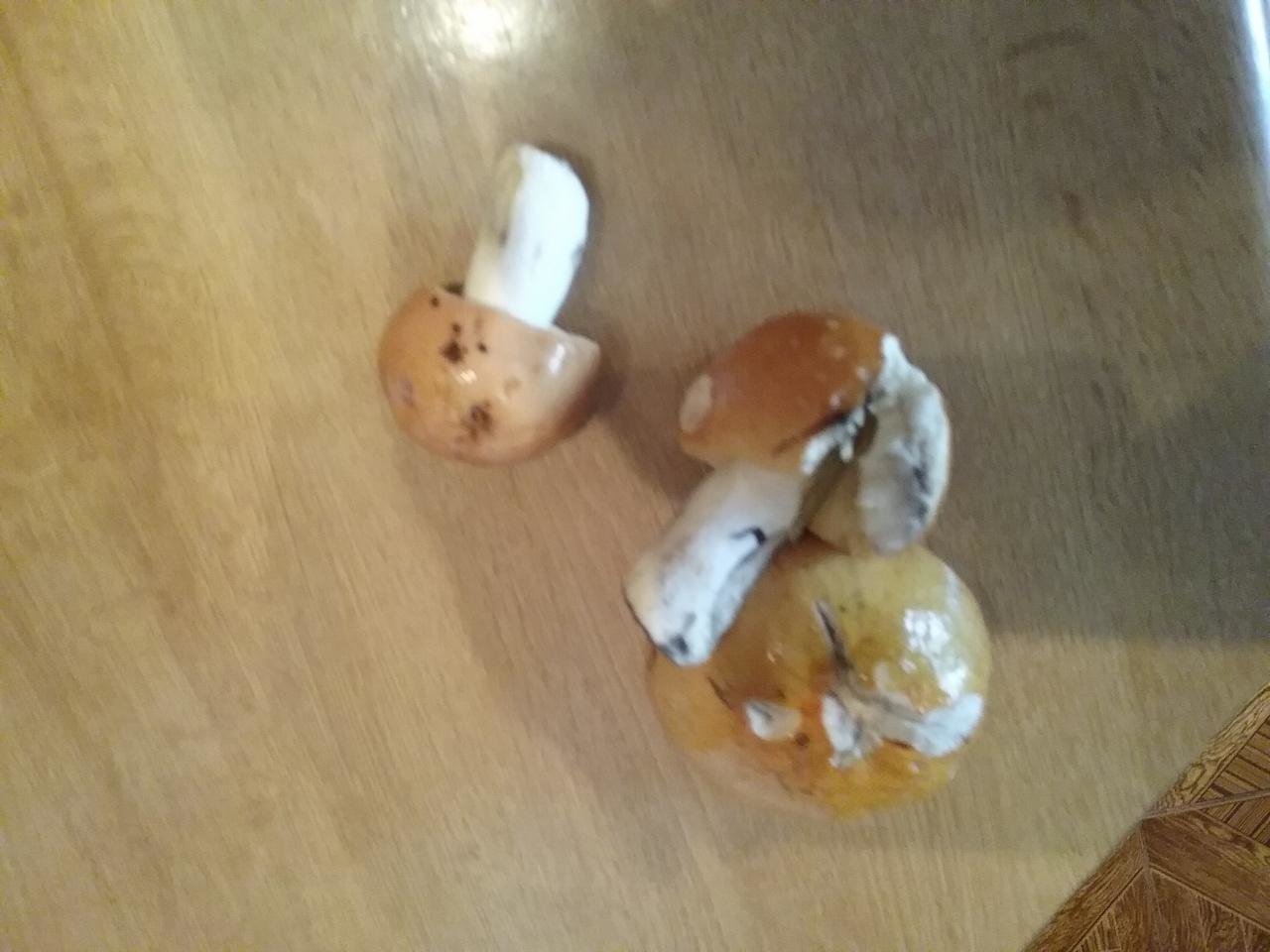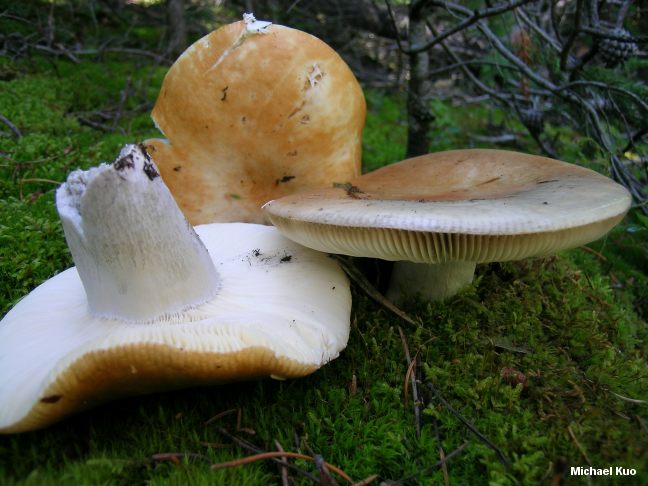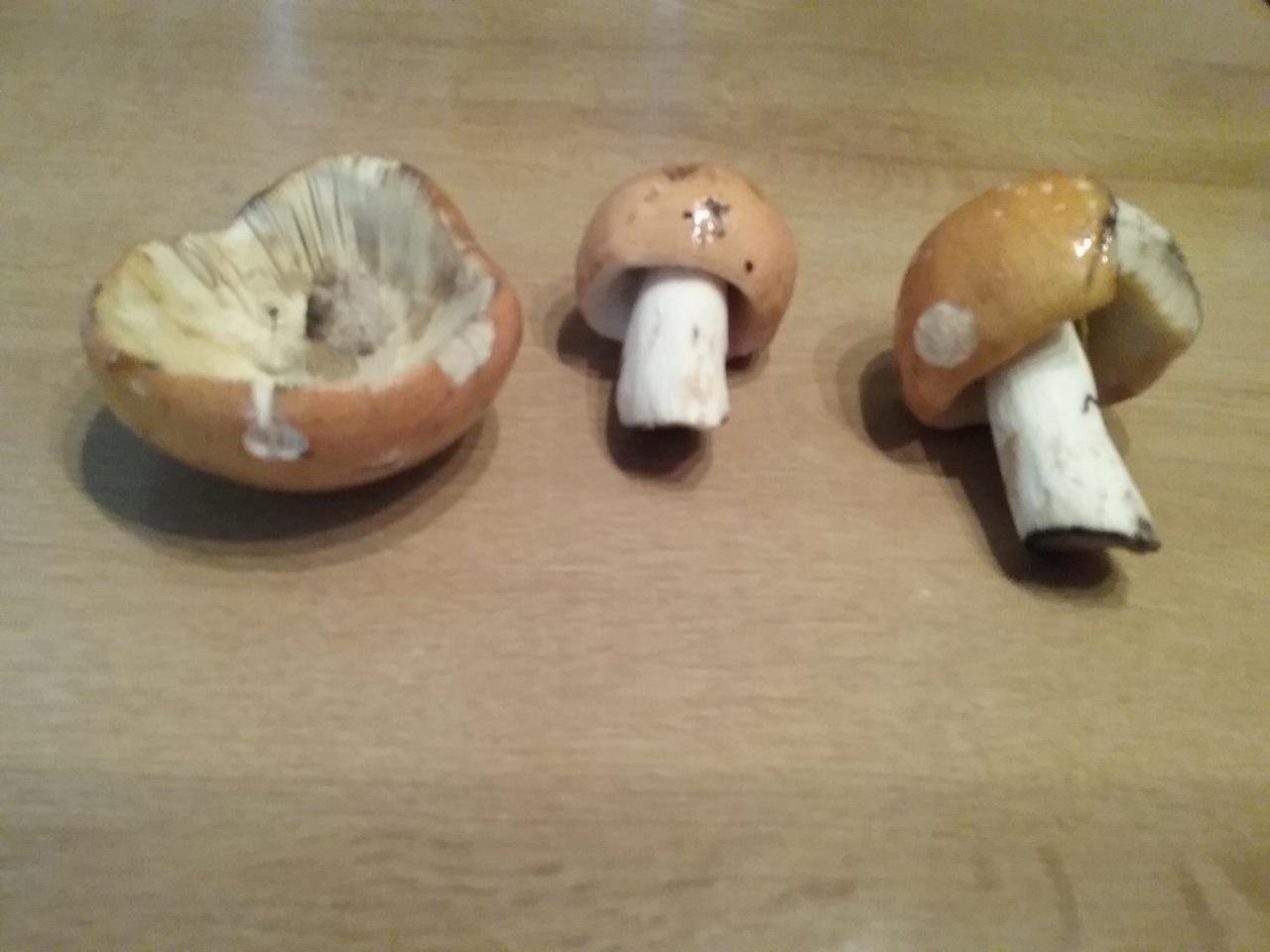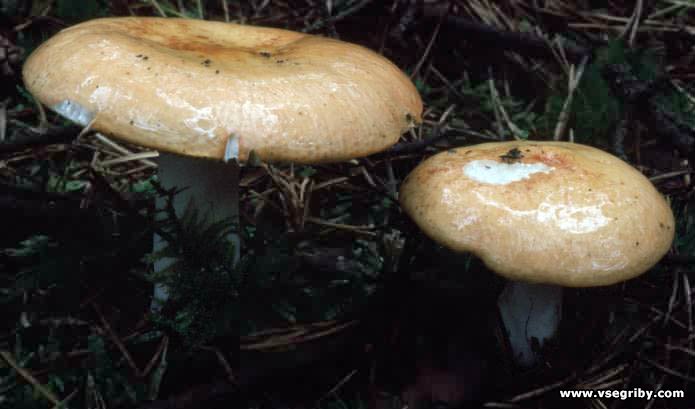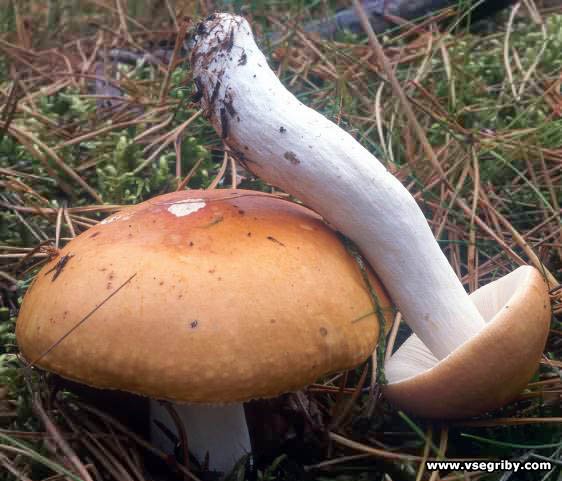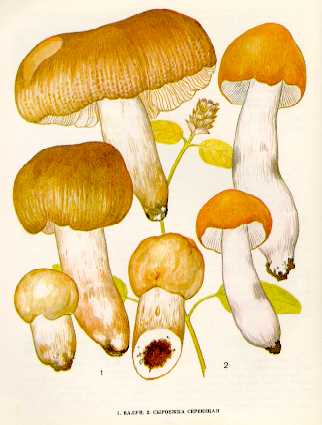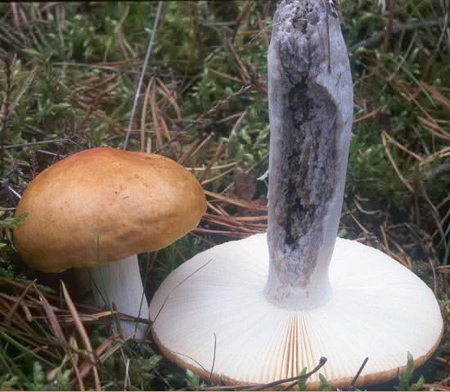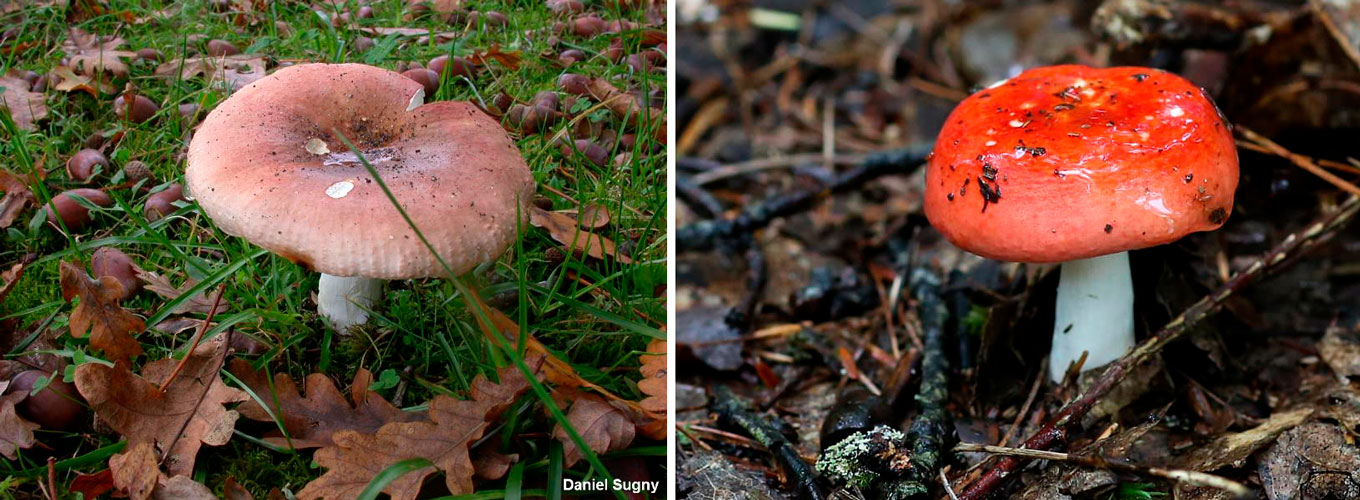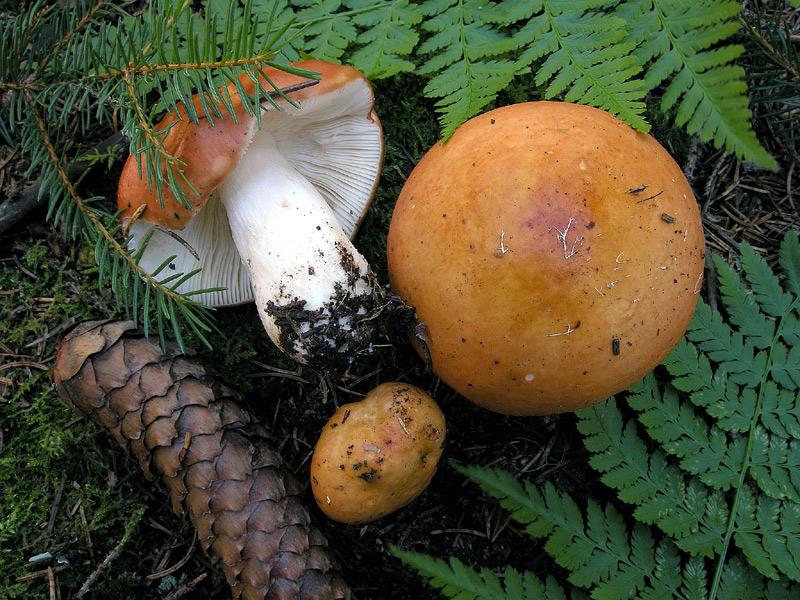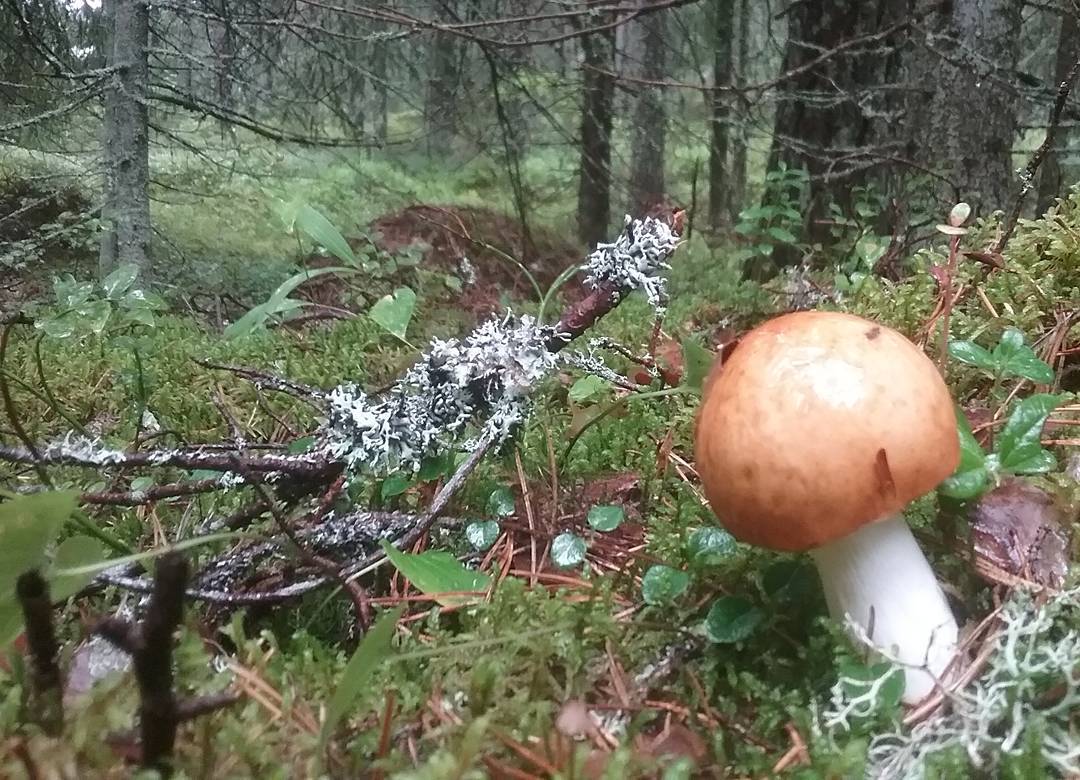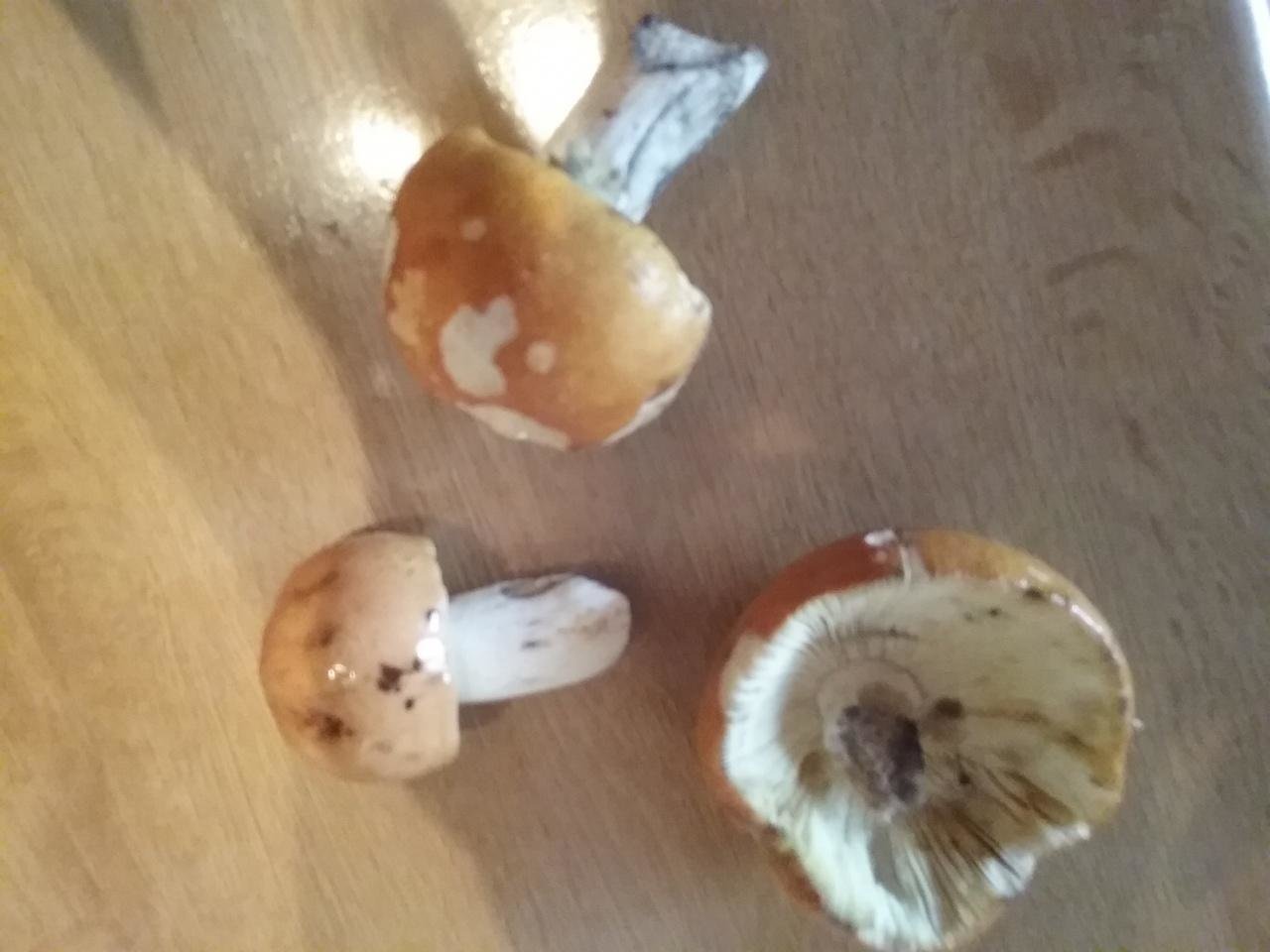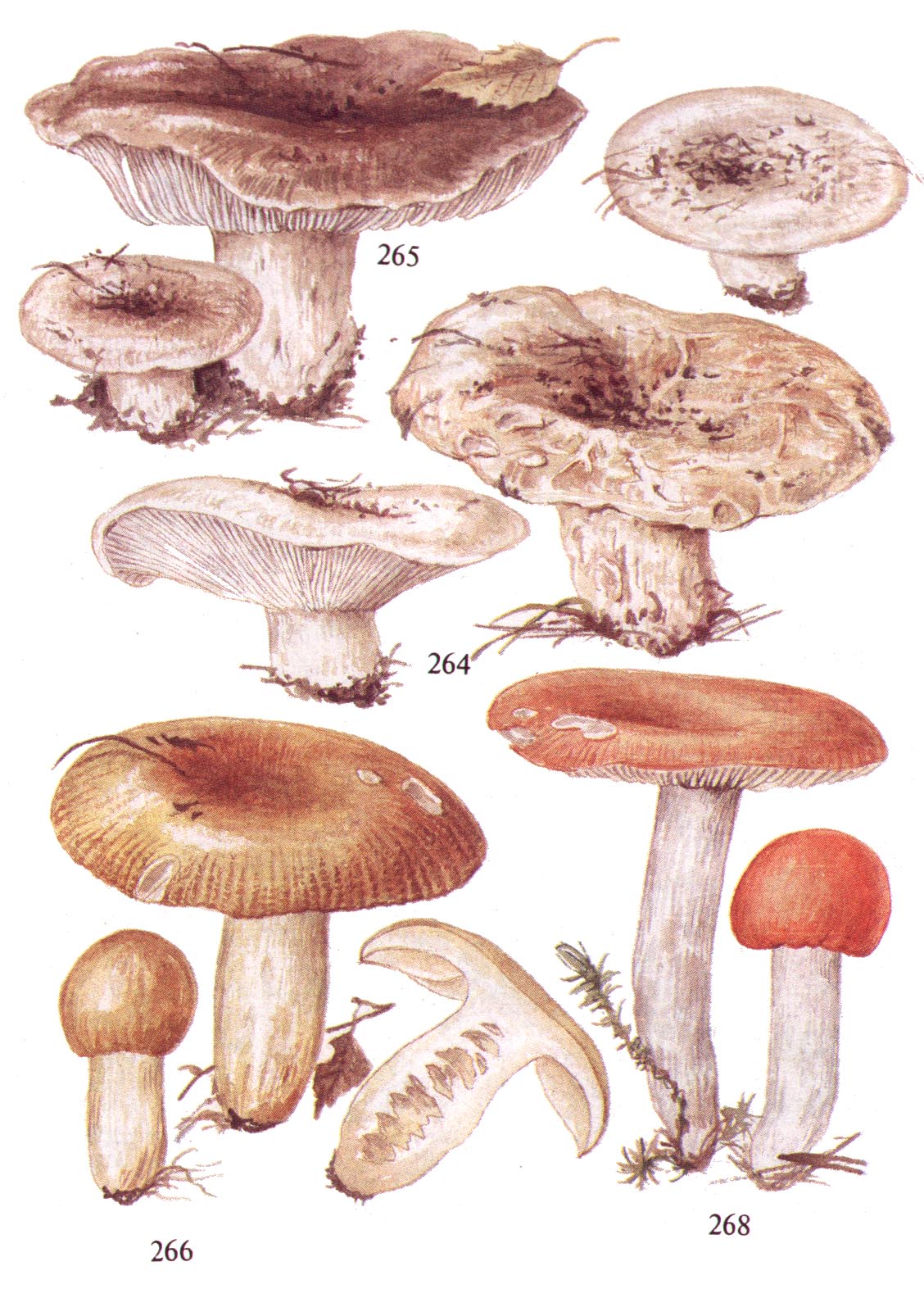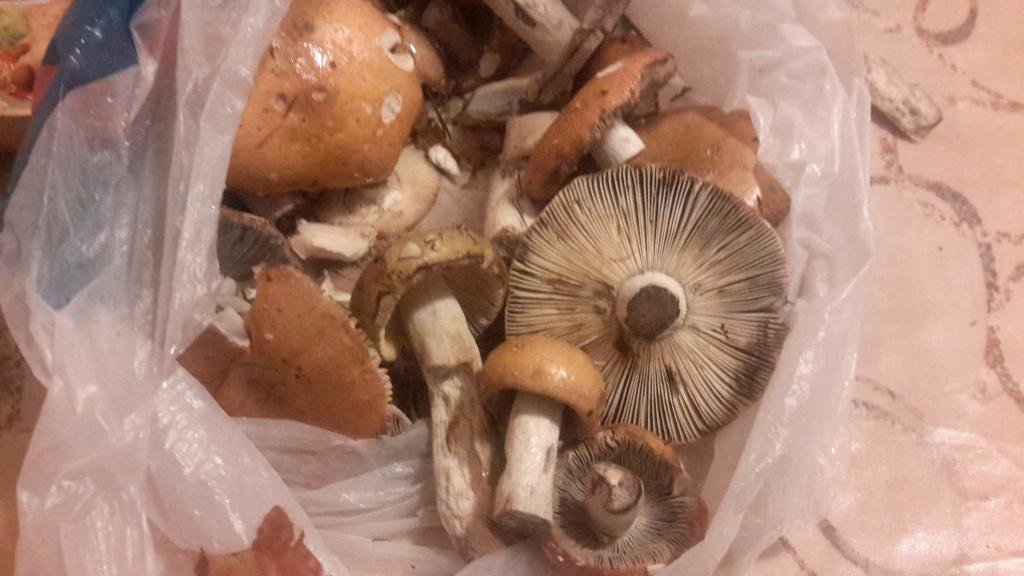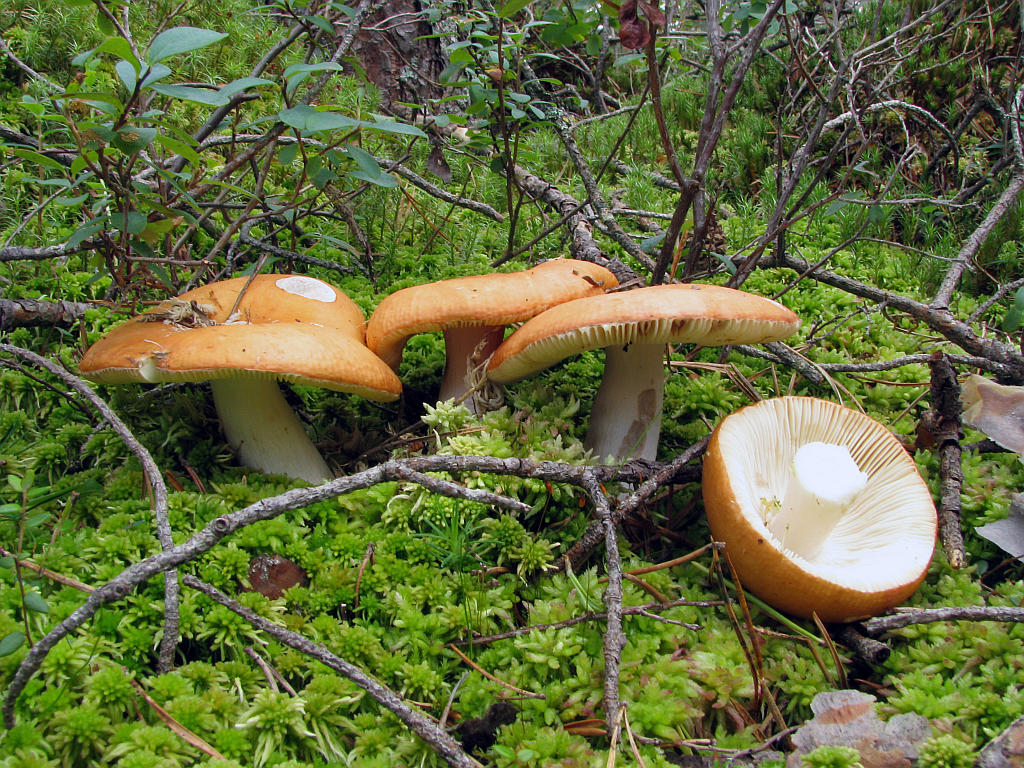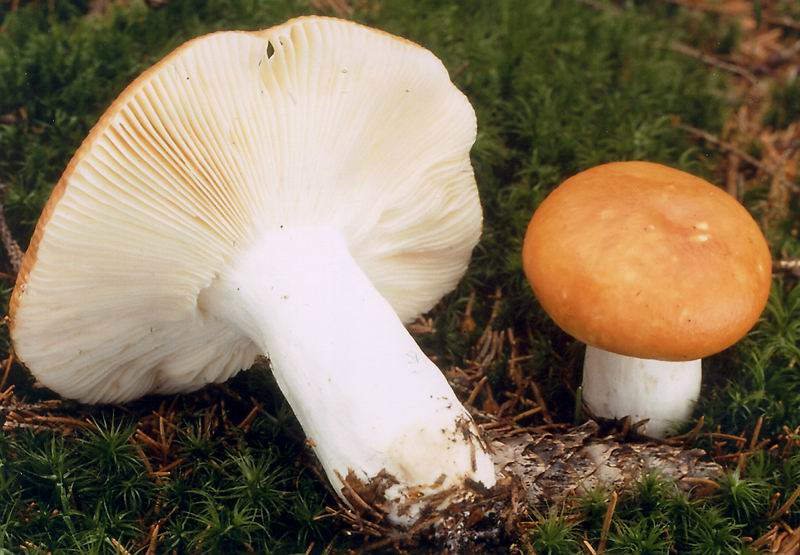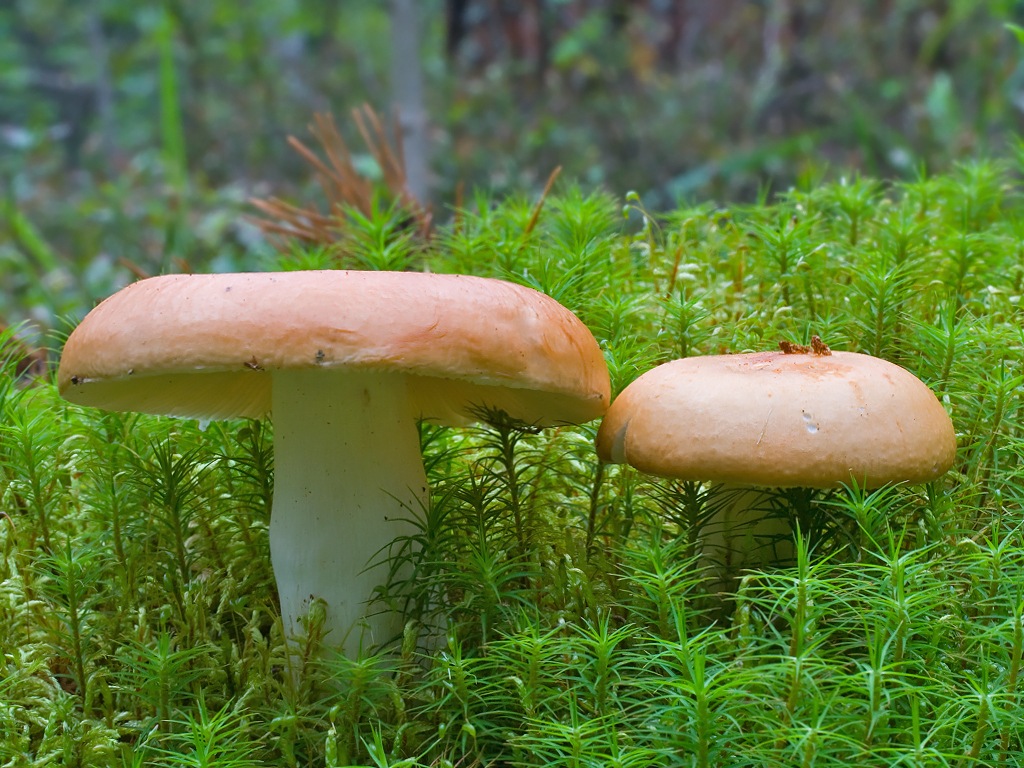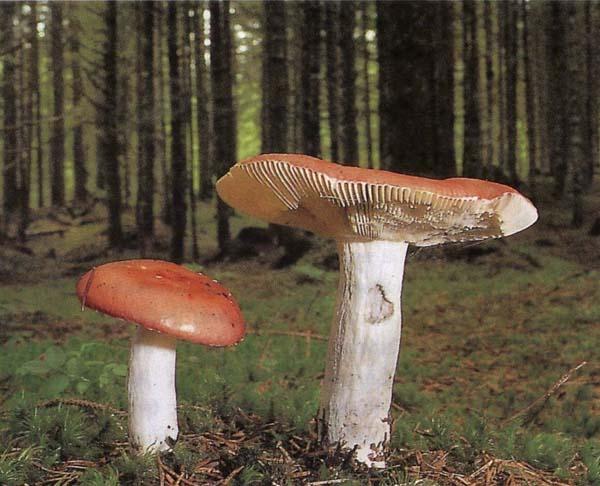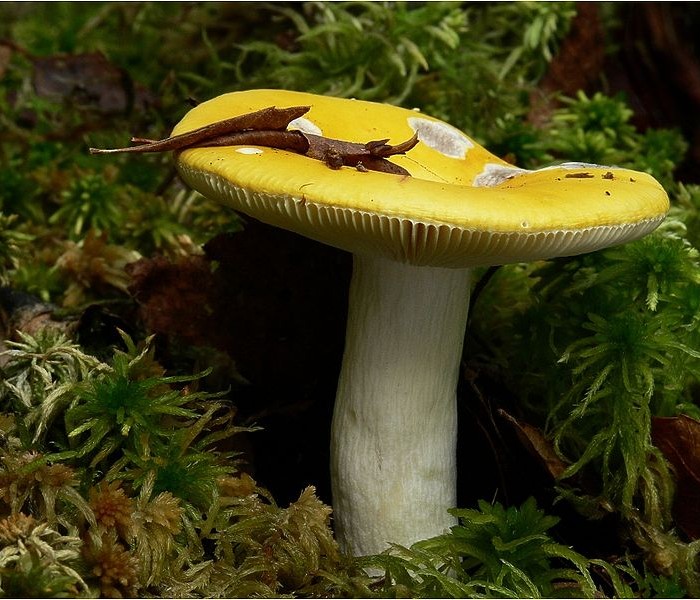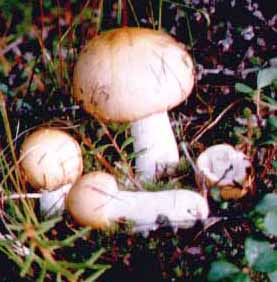Description of gray russula
The diameter of the fading russula cap reaches 12 centimeters. The caps are fleshy, at first hemispherical, and eventually flat-convex or depressed. The color of the cap is yellow-orange, yellow-red, yellow-brown. The edges of the cap are thin, slightly striped. The peel is removed to half of the cap.
The plates are thin, lomaki, often located, at first their color is white, then it turns yellow and finally turns gray. The pulp is white; at the break it turns gray. The pulp tastes sweet at first, but becomes pungent in older specimens. Spores are prickly, ellipsoidal. Spore powder of pale ocher color.
The length of the leg reaches 6-10 centimeters, and the diameter does not exceed 1-2 centimeters. In structure, the leg is strong, upward it, as a rule, becomes thinner. First, the leg is filled, then the center becomes wadded. In young mushrooms, the color of the leg is white, but with return it becomes dark gray, and the surface is covered with wrinkles.

Growing places of gray russules
The russula grow gray in pine wet forests. They do not bear fruit abundantly, but at the same time they come across often. They are found in Eurasia and North America. Fruiting time is from June to October.
Appearance
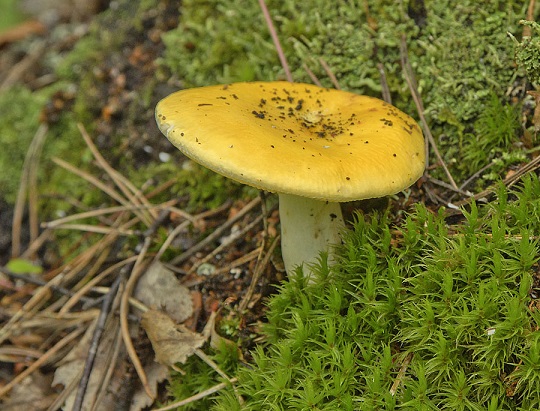
Hat
Diameter from 4 to 10 cm, the cap is convex at first, then flattened, often the center is slightly depressed. Bright yellow, sometimes ocher yellow, the surface is smooth when dry and sticky when wet. The cuticle exfoliates halfway to the center, the flesh under the cuticle is white, slowly turning gray in places of cut or break.
Gills
The plates of the hymenophore are attached to the stem, sometimes not, rather numerous, the bifurcated gills are pale buffy, gradually darkening as the fruiting body ages.
Leg
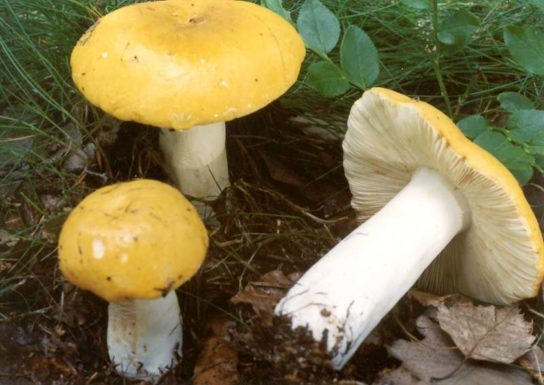
10 to 20 mm in diameter and 4 to 10 cm in height, fragile legs are white at first, then turn gray with age or when damaged. The flesh is also white and there is no ring on the stem.
Spores are ellipsoidal, 8-9.5 x 6.5-8 microns, decorated with blunt, predominantly isolated warts up to 0.6 microns in height with only a few connecting filaments. The spore seal is pale ocher yellow. No significant odor, mild or slightly pungent taste.
Description of the green russula.
The cap of the green russula is not too fleshy. Its diameter reaches 14 centimeters. The surface of the cap is sticky. In dry weather, the hat shines and looks quite appetizing. The caps of young specimens have a pale greenish or whitish color, and by old age they become brown.
The spore-bearing layer in the green russula is represented by the lamellar type. In young fungi, the plates are white, and in overripe specimens, they are creamy. The plates are fragile, at first they are located quite often, then they diverge. They are almost free from the leg, sometimes branching next to it. The color of the spore powder is cream. The spores are warty, elliptical, with an indistinct mesh.
The leg is straight, cylindrical. She is quite thick - her girth can be up to 5 centimeters. The color of the leg is white, and with age, brownish spots appear on its surface.
The flesh of the green russula is strong. It tastes sweet, and almost no smell. The color of the pulp is at first white, and over time it becomes yellowish.
Places of growth of green russula.
Green russula can grow wherever there are forests. They inhabit deciduous and mixed forests. The Russian climate is the most favorable for this species, therefore the population of green russula is quite numerous.
Green russula bear fruit from July to October. They love cool weather, so they are most abundant in the fall. It is at this time that the harvest of green russula is most abundant. They grow in single specimens or in few groups.
Green russula are widespread in European mixed and deciduous forests. These mushrooms form mutually beneficial alliances (mycorrhiza) with downy birch and drooping birch.
Evaluation of the edibility of green russula.
Green russula belongs to the edible species of russula. It has a pleasant, not bitter taste. According to their taste, they are referred to the 4th category. This type of russula is the safest for consumption.
Green russula can be subjected to various types of culinary processing. They are suitable for frying, stewing, salting, pickling. This kind of russula can even be eaten raw.
The advantages of green russula and the rules for their collection.
Green russula, unlike many other russula, almost do not crumble during collection and tolerate transportation well, since they have a fairly dense structure, which is one of the main advantages of this species.
It is worth remembering that any mushrooms should be collected away from city limits and roads, as they absorb toxic substances and fumes from the air and soil.
The similarity of the green russula with other mushrooms.
It is easy to recognize this type of russula by the greenish tint of the cap. But beginners, nevertheless, can confuse the green russula with the pale toadstool. You can distinguish the pale toadstool by the ring on the leg, which the russula does not have.
Chemical composition of green russula.
Green russula is a dietary product - its calorie content is 19 kilocalories per 100 grams. They are composed of fats, proteins and carbohydrates. In addition, they are rich in minerals and vitamins. They contain vitamins PP, C, E, B1 and B2. They also contain minerals: Mg, Ca, K, P, Na and Fe.
Edible russula fading
The gray russula belongs to the edible mushrooms of the 3rd category. Only hats are used for food. These mushrooms can be eaten fresh or salted.
Other mushrooms of this genus
Pink russula or beautiful russula - conditionally edible mushroom. The shape of the cap is semi-circular or flat. Its edges are smooth, the surface is dry and velvety. In wet weather, a small amount of mucus appears on the cap. The color of the cap is changeable, it varies from dewy to dark pink, in the center the shade is more saturated. The leg is cylindrical and regular.

The russula pink is ubiquitous in North America and Eurasia. They grow in deciduous forests, but can also often be found in coniferous forests. In addition, these mushrooms can grow in mountainous areas - on the slopes of hills. They are collected from July to October. With sufficient humidity, they bear fruit quite abundantly. The palatability of pink russula is mediocre. To remove the bitter taste, these mushrooms should be boiled.
Yellow russula - edible mushroom. The shape of the cap is hemispherical, but over time it becomes almost flat and even funnel-shaped. Its diameter is 5-10 centimeters. The hat is dry and smooth. The edges of the cap are smooth with peeling skin. The color of the cap is yellow. The leg is always white, even, cylindrical, dense, its base is grayish.
Yellow russula bear fruit from July to September. They grow in damp deciduous forests. Form mycorrhiza with birches. They can also be found in moss, along the edge of swamps. They settle in small groups or singly. Yellow russules grow often, but not abundantly.

The yellow russula belongs to the edible mushrooms of the 3rd category. They taste good, but are not as highly prized as other russula types. These mushrooms can be used fresh and salted. During boiling, the flesh of yellow russules darkens. It is recommended to harvest young fruiting bodies with firm pulp.
Gray russula
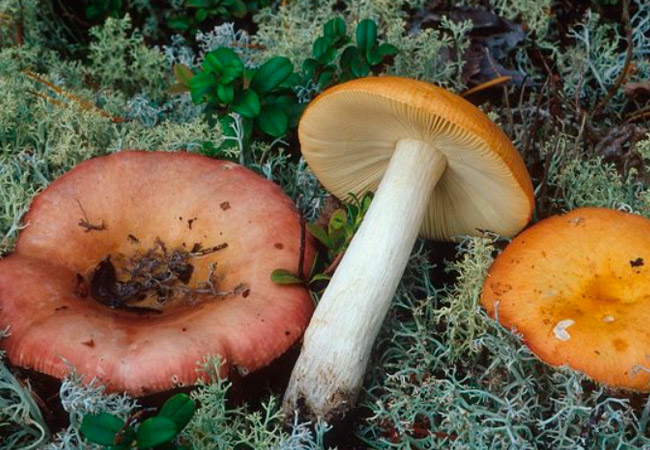
Some mushrooms from the russula family are able to transform as they grow up: in some, the color of the caps changes, in others the flesh becomes fragile, and in others the shade of the plates is transformed.For example, a russula damp in old age has not white, but gray flesh, and if damaged, its flesh also turns gray.
Gray russula - Latin Russula decolorans
In another way, the mushroom is called fading russula.
External features
Mushroom cap
The caps of this type of mushroom reach 40-110 mm in diameter and are hemispherical at first. Later they acquire a flatter shape, a shallow dimple in the middle and smooth edges, which become furrowed in old age.
The surface of the hats is covered with a firmly adhering skin, colored in various tones: from red-brown and orange-brown to brown.
Hat bottoms are formed by frequent, thin and fragile plates, branching at the legs and growing to them. The color of the plates is pale-ocher or white-cream, closer to old age - grayish. If you cut them, they will turn black.
The fading russula has a tight white flesh that turns gray in old age, during drying and when damaged.
The fungus reproduces by ellipsoidal pungent spores contained in ocher or creamy spore powder.
Stipe
The leg of the gray russula grows about 10-20 cm in thickness and 60-100 mm in height. In youth, it is distinguished by its strength, later it becomes wadded in the middle. Young mushrooms have white legs, old ones are gray and covered with a wrinkled pattern.
Places of growth and fruiting
These russula prefer moist coniferous forests with spruce and pine trees and blueberries. Most often they are found in moss, from which only the caps usually stick out, and the legs remain in its thickness. Mushrooms are harvested from the North American and Eurasian continent.
Fruiting often occurs in large families and occurs in mid-July - late September. In some places, the fungus appears as early as June.
Edibility
The gray russula is distinguished by a subtle sweetish aroma and sweet taste without the slightest hint of bitterness. This mushroom is considered edible and belongs to the 3rd category of edibility.
Legs are usually not eaten - only hats, preferably from young mushrooms with firm, unblown "headdresses". After boiling for 20 minutes, they can be salted, pickled or fried.

